How a rural village of elderly residents is coping with Covid-19 during CNY
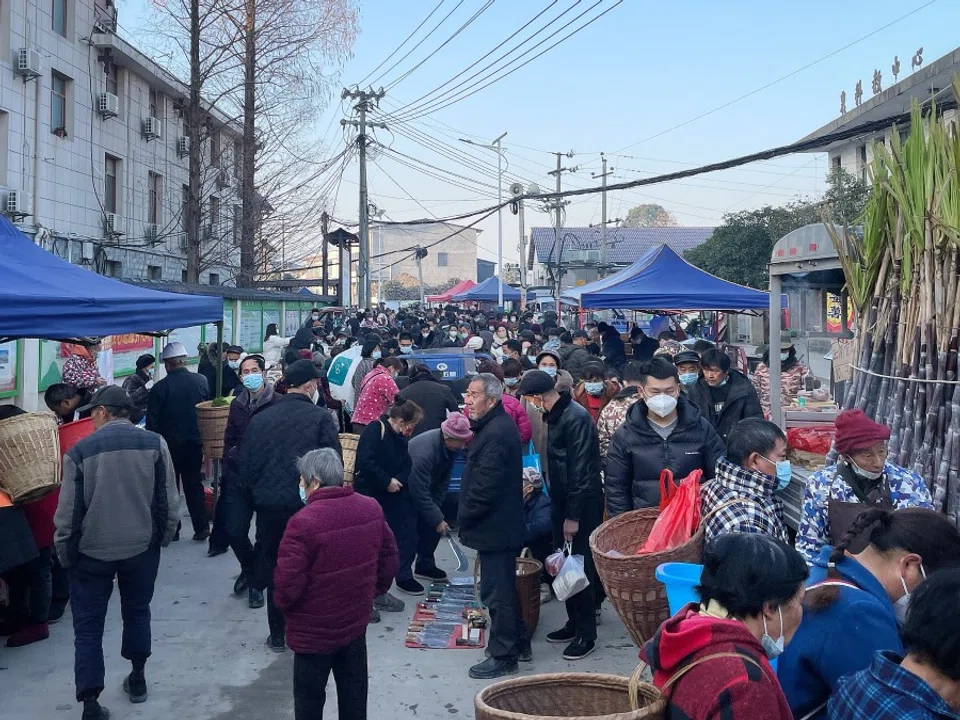
(Photos: Wong Siew Fong)
At around 8 am on 8 January, the Chinese New Year (CNY) market opened at Fengxianggang village in Zhangjiajie city, Hunan province. Hundreds of villagers from nearby areas jostled around makeshift stalls carrying local-style baskets on their backs, fully focused on buying fresh meats and other fares to prepare for the upcoming CNY.
Looking at the hustle and bustle of the market, it is hard to imagine that this area with around ten small villages and a total population of 10,000 experienced a severe Covid-19 peak just a week ago.
My driver Zhang Jian said that around 30 December, the area saw five or six funerals in less than a week, in contrast to the usual once a month or so. The villagers said that these elderly died of "white lung disease" - pneumonia following a Covid-19 infection.
In late December, a team led by Chen Saijuan - academician at the Chinese Academy of Engineering and director of the State Key Laboratory of Medical Genomics at Shanghai Jiao Tong University School of Medicine's Ruijin Hospital - and Fan Xiaohong of the Shanghai Public Health Clinical Center released a report saying that some villages and small- and medium-sized towns are expected to see an infection peak in the second half of January, and this might be brought forward due to the CNY travel wave.
The authorities originally forecast that Hunan's rural villages would see a peak around the CNY period, but the residents said that the villages in Zhangjiajie saw an early peak in the last week of December.
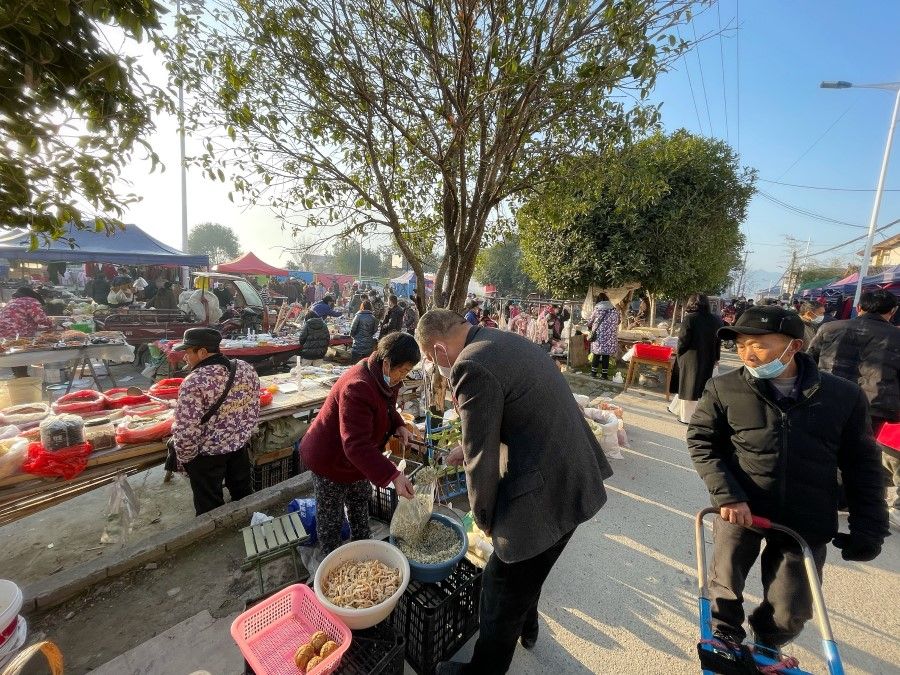
In Hunan, one in four locals works outside of their hometown, making it among the four Chinese provinces with the largest migrant working population. In December, the Hunan government started ramping up preparations for a potential outbreak due to the wave of people returning during CNY. The authorities originally forecast that Hunan's rural villages would see a peak around the CNY period, but the residents said that the villages in Zhangjiajie saw an early peak in the last week of December. When I visited the villages on 8 January, the heavy controls from two weeks earlier were no longer in place.
Short supply of cold medicine
As I left the market, Zhang's good friend Brother Wang hitched a ride with us as he was headed to a wedding at a village five minutes' drive away. The 70-year-old Brother Wang had no qualms removing his mask around non-locals.
Brother Wang was among the first villagers to get infected around 15 December, and only tested negative in late December. He casually shared that he only had a mild fever for three days, with "light symptoms, like a more serious cold."
Shortly after the Chinese authorities announced on 7 December the ten measures to relax the zero-Covid controls of nearly three years, people began stockpiling cold medicine.
The staff at three pharmacies in the villages of Zhangjiajie said that the cold medicine started to run out in early December, and it was only after New Year's Day that supplies stabilised. The Lianhua Qingwen pills that Brother Wang's family stocked up on in early December came in handy when they were infected. While Brother Wang had seen a doctor in town for his mild fever, the cold medicine stocked at home helped him recover.
Hunan is among the ten provinces with the highest number of elderly people, with over 5 million elderly in rural villages.
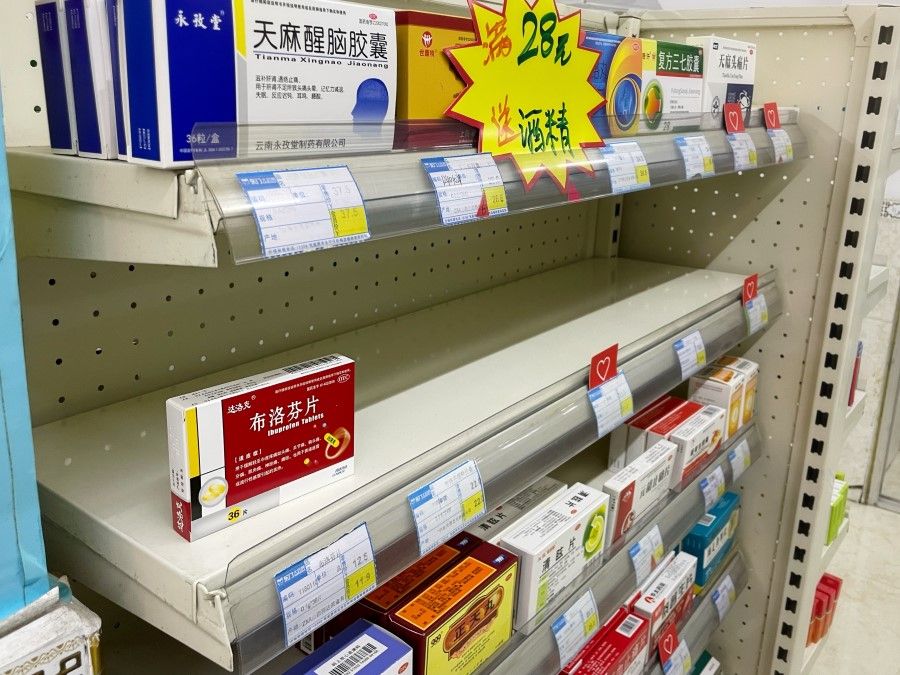
With the lack of official data, villagers can only make guesswork about the peak of the outbreak. Brother Wang surmised that the last week of December was the height of the outbreak in the village as many stores were shut. The village gradually revived after New Year's Day. Brother Wang was unable to give a specific number of how many villagers were infected, but asserted that "a lot of people tested positive".
When I asked if Covid-19 was as scary as imagined, Brother Wang's smile disappeared and he said solemnly, "Most people had mild symptoms and recovered in a few days, but a lot of elderly had prolonged breathing difficulties, and many elderly have passed on recently."
China's elderly population is concentrated in the rural areas. According to official data, in 2020, those aged 60 and above and 65 and above accounted for 23.81% and 17.72% of the rural population respectively, 7.99 and 6.61 percentage points higher than urban areas. Hunan is among the ten provinces with the highest number of elderly people, with over 5 million elderly in rural villages.
Late last month, London health statistics company Airfinity estimated that China's Covid-19 deaths might peak at 25,000 a day around 23 January, with the bulk being the elderly.
In the eight hours that I was in the rural areas, there were at least three funerals in the villages...
Three funerals in eight hours
During major events such as funerals and weddings, it is a custom for the villagers in Zhangjiajie to ignite firecrackers and set up inflatable arches at doorways - blue for funerals and red for weddings.
In the eight hours that I was in the rural areas, there were at least three funerals in the villages, interspersed with the sound of firecrackers. Zhang said that the firecrackers in the villages have been particularly frequent recently, more often than not they marked the death of an elderly from Covid-19, not the commemoration of a wedding.
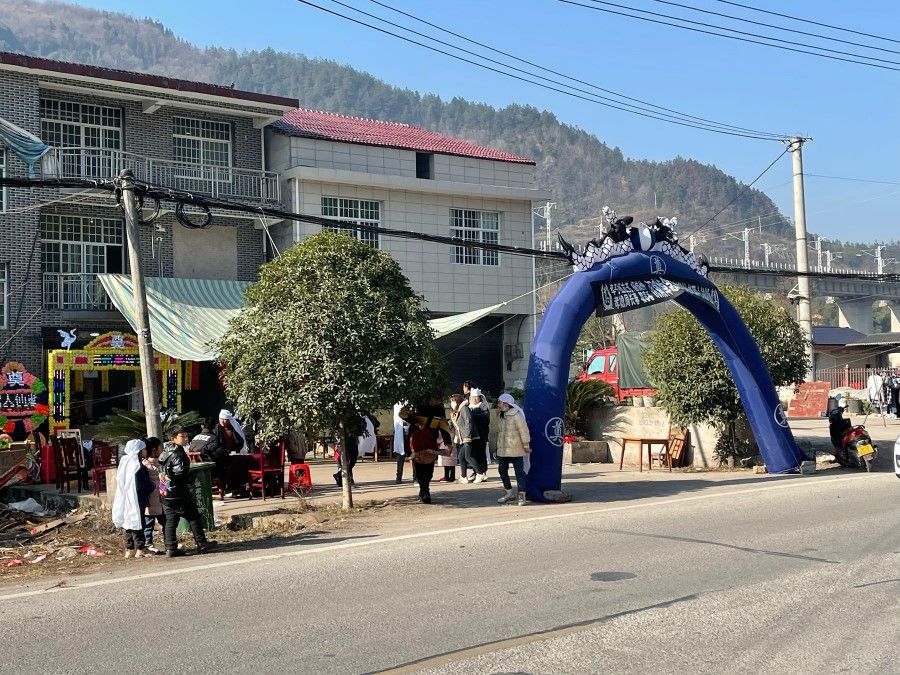
Zhang's maternal grandfather in his eighties was one of the elderly who died during the peak of the outbreak. He told me that his grandparents had lived together. In the last week of December, his grandmother realised that his grandfather had lost his appetite for days, and told their children to get him treated. But by that time, his grandfather was already having difficulty breathing. After being diagnosed with Covid-19 at a health centre, his grandfather was sent to a city hospital about 30 minutes' drive away, where a CT scan of the deteriorated lungs showed that he had pneumonia.
Zhang's grandfather passed away two days later, leaving behind 83-year-old Granny Wang, who now lives alone in a concrete house on a little hill in the village, separated from the other houses by a flight of stairs about three or four metres long. Despite the short distance, Granny Wang's house seems to be isolated from the world - her sons live in the three other houses on that hill, but they are mostly away for work during the day, leaving her on her own. Granny Wang had also caught Covid-19 in late December, but she only had a mild cough and recovered after a few days.
When I arrived, Granny Wang was sitting in her usual spot on a bench in the yard. In the garbage can beside the bench was an empty box of cold medicine from a few days ago. Despite there being no one around, she kept her mask firmly on.
Granny Wang did not speak Mandarin, and Zhang helped to interpret. She was a woman of few words and was reticent about her husband's death. Beneath the mask, she maintained a stoic expression.
Over the past couple of weeks, experts have warned that areas that have just seen the first peak might see a secondary peak in mid-January due to the wave of returning locals. Villages in Anhui, Shandong and Henan are said to have tightened Covid-19 rules and called for those returning to register themselves.
Zhangjiajie has not set any restrictions on those returning to the villages. The villagers said that more people will return this year, but it will not be a significant number. On the day that I was in the village, I only saw five or six vehicles with out-of-town car plates parked outside the houses.

Zhang said that after Covid-19 broke out three years ago, most of his family's younger generation working in Zhangjiajie city avoided coming home to the village to visit Granny Wang. She also had less contact with other village residents.
Following the outbreak in late December, Granny Wang did not let down her guard despite having contracted Covid-19 before. Her husband's death has given her a firsthand taste of the risk to the elderly posed by Covid-19. She is especially careful in the run-up to this year's CNY - she has hardly left the house and does not plan on visiting the market during the CNY period.
Granny Wang is unaware of how many people in the village are infected or when the peak is; all she knows is that the risk of the virus is still there, and staying home is the safest choice. As for whether she is worried that the CNY travel wave will lead to another Covid-19 wave, she blandly said, "What's the use of worrying?". She then returned her gaze into the distance.
However, it is not that she fears reinfection - she is afraid that business would be affected again.
Villagers wary of impact on businesses
However, not everyone is afraid of the pandemic. When her family of more than ten people tested positive for Covid-19 in late December 2022, Li Juan, a Chinese fried dough street vendor in her sixties, had to close her stall for more than a week. But as the Covid-19 wave had passed its peak in the village in less than two weeks, she is getting excited again. "People are filling the streets again. I haven't seen so many people since the pandemic hit a few years ago," she said.
As for the second wave of Covid-19 infections that could hit the area during the CNY, Li exclaimed, "Of course I'm worried!" However, it is not that she fears reinfection - she is afraid that business would be affected again.

She explained, "We would just be down with a fever and a cough for a few days if we get infected. But if everyone is not getting out of the house, what would happen to my business?"
(Interviewee names are pseudonyms)
Zhangjiajie's twofold risks
As Zhangjiajie is one of China's top tourist destinations, its surrounding rural areas face the risk of another Covid-19 wave as people return home for the CNY and tourists flood the region again after the relaxation of anti-Covid measures.
According to Driver Zhang, around 70% of villagers in Zhangjiajie work in tourism-related industries. Outside the Yangjiajie Scenic Area, Liu, a stall owner in her forties, was just about to open for business. "I just came back today to reopen my stall, after nearly five months of closure," Liu said as she arranged her beverages for sale.
Liu said that Yangjiajie saw thousands of tourists every day before the pandemic hit. But since last year, this number has dropped to a mere few hundred each day.
The pandemic badly affected Zhangjiajie's tourism industry. Taking the Qingming Festival holiday as an example, only less than 680,000 people visited Zhangjiajie during the Qingming period in 2021, compared with around 1.25 million people during the same period in 2019.
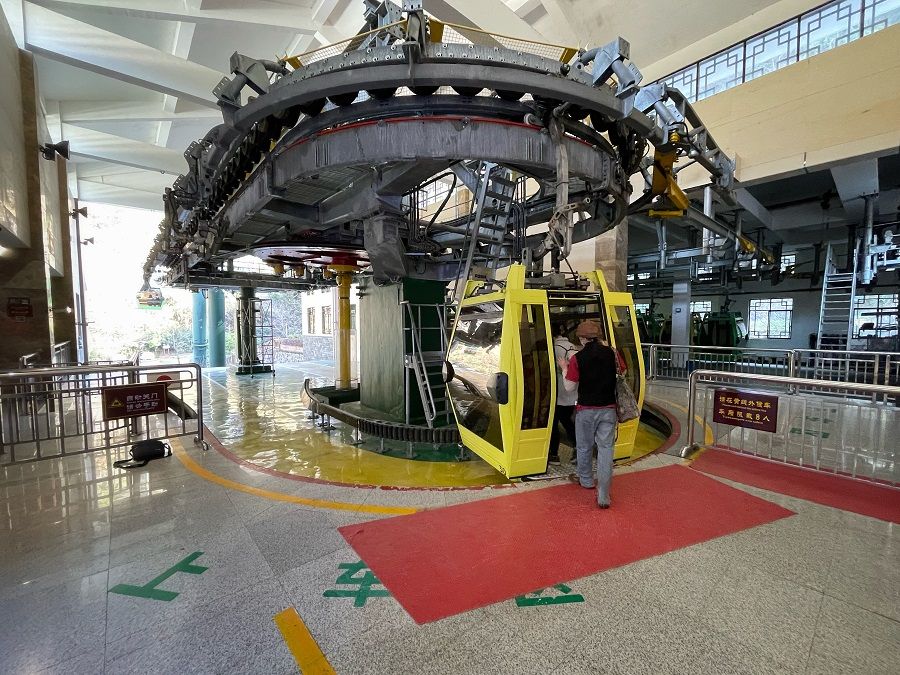
Liu said that Yangjiajie saw thousands of tourists every day before the pandemic hit. But since last year, this number has dropped to a mere few hundred each day. It was not until January this year that tourists began to fill the place again. Currently, 400 to 500 tourists visit Yangjiajie each day.
Liu is not at all worried that foreign travellers could cause a surge in Covid-19 cases. Instead, she sees tourists as a glimmer of hope to restore her livelihood.
She said, "For five months, we survived solely on my husband's income. Although there are still far fewer tourists than before, at least I can work again."
... in 2020, China's village doctors and rural grassroots health workers only accounted for 5.9% of the country's total medical personnel but are responsible for the medical care of nearly 500 million people living in rural areas.
Capacity of rural healthcare system
China's battle against the latest Covid-19 wave has recently put the capacity of its rural healthcare system under the spotlight, with foreign media outlets repeatedly reporting on the shortage of healthcare resources in rural areas over the past month. But as I walked into a health centre in a rural area around Zhangjiajie, there were no patients in the fever clinic and only two-thirds of the approximately 40 hospital beds were occupied.
China's rural healthcare system has long been seen as the weakest link in China's pandemic management system. While older people at higher risk of contracting Covid-19 are concentrated in rural areas, hospitals and intensive care units are concentrated in the cities. Based on official statistics, in 2020, China's village doctors and rural grassroots health workers only accounted for 5.9% of the country's total medical personnel but are responsible for the medical care of nearly 500 million people living in rural areas.
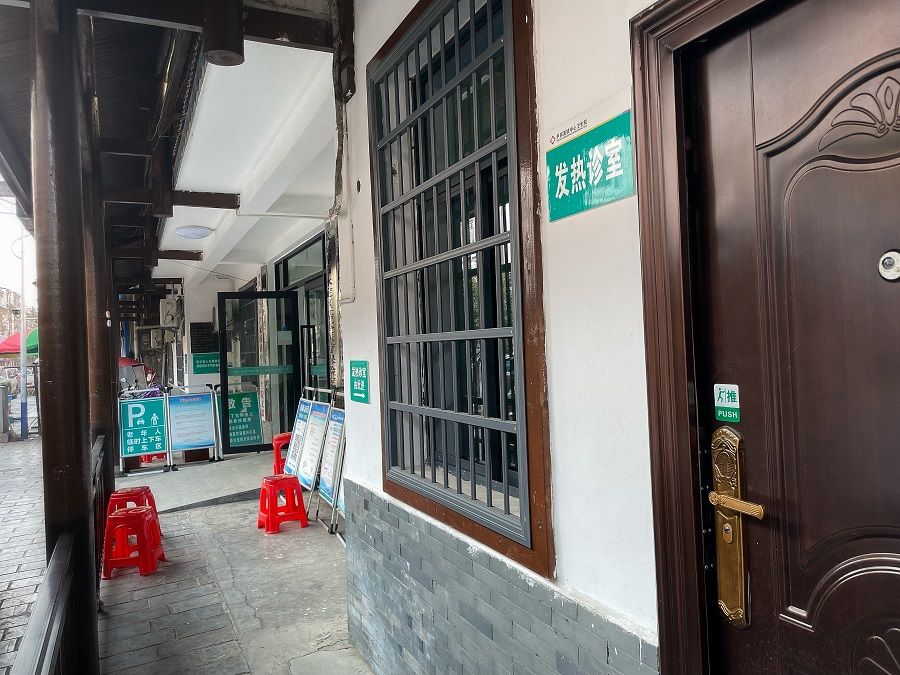
Chinese officials have been stepping up the medical treatment capacities of rural areas since December 2022, especially in transferring severe and critical cases to larger hospitals in urban areas. In Zhangjiajie, mild cases are generally treated with cold medicine or fever injections at nearby health centres five to ten minutes away from the villages. More severe cases would be treated at the hospital in the urban area, where lung CT screening services, Respiratory and Critical Care Medicine departments and intensive care units are available.
Based on the tiered diagnosis and treatment implementation plan released by Hunan authorities in early January, severe Covid-19 patients can be transferred to Hunan Provincial People's Hospital in Changsha, which is about a four-hour drive away. But the villagers that I interviewed do not know of this transfer protocol.
Few patients were seen in the two health centres that I visited. An employee from a provision store next to one of the health centres told me that there was a significant increase in patients in late December 2022, but the number had already returned to normal in January.
... even at the peak of Covid-19 infections in late December last year, there was no overcrowding.
Similarly, there were also few patients at Zhangjiajie City People's Hospital. However, when I was there, I saw at least three elderly patients wearing oxygen masks being sent to the hospital via ambulance in the span of five minutes.
The villagers claim that there was no serious shortage of medical resources at the local health centres and city hospital, and that even at the peak of Covid-19 infections in late December last year, there was no overcrowding. However, the rise in Covid-19 deaths among the elderly living in rural areas has raised questions about the capacity of China's rural healthcare system.
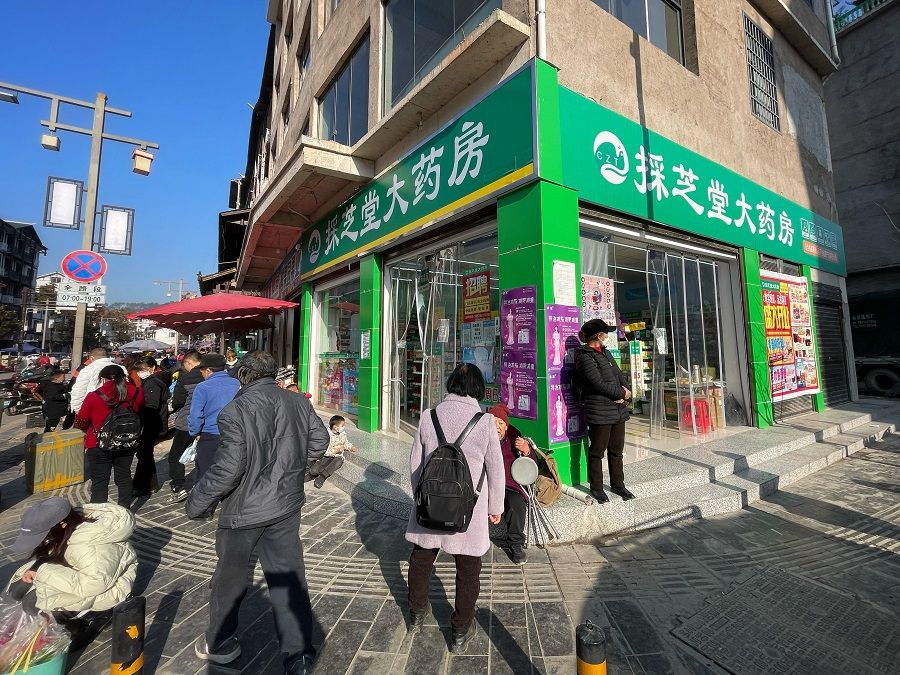
In a 31 December 2022 front-page commentary, Farmers' Daily (《农民日报》) raised concerns about the capacity of frontline rural healthcare workers in responding to the Covid-19 outbreak, and said that many grassroots healthcare organisations have no experience in treating Covid-19. However, in the new phase of epidemic prevention and control, most patients are required to be treated at county hospitals, township health centres and village clinics. The commentary urged healthcare workers in the counties, townships and villages to build up their medical supplies and relevant knowledge.
As China's rural areas had not dealt with a large-scale Covid-19 outbreak, the majority of village clinics mainly focused on helping villagers manage basic health conditions such as hypertension over the past three years.
... it is necessary to enhance the capacity of the rural healthcare system and accelerate the development of the three-tier healthcare system.
Professor Chen Hsiu-Hsi of National Taiwan University's College of Public Health pointed out that the Covid-19 outbreak in rural China highlights the weakness of China's rural healthcare system. As China's healthcare system has long been dominated by hospitals, prior to the pandemic, officials had wanted to promote a three-tier healthcare system involving the central government, provinces and villages to strengthen the role of grassroots medical institutions in rural areas. But this plan was disrupted by the raging pandemic over the past three years.
When the stringent dynamic zero-Covid policy was still in place, pandemic-related items and services such as fever and cough medications, and fever clinics, were strictly controlled. Chen pointed out that it was already difficult for various regions to resume normal healthcare services at the time, let alone promote the three-tier healthcare system. Thus, when a new wave of Covid-19 infections swept across rural areas, there was a huge gap between urban and rural medical care in terms of antiviral drug reserves and medical knowledge.
While the shortage of medical supplies in rural China has alleviated, Chen warned that subsequent waves of Covid-19 infections may occur in succession. Hence, it is necessary to enhance the capacity of the rural healthcare system and accelerate the development of the three-tier healthcare system. Otherwise, rural grassroots medical institutions will face a tough challenge again.
This article was first published in Lianhe Zaobao as "春运启动 冠病风险骤增 农村医疗面临战疫大考".
Related: Three years of Covid-19 exposes chronic political and social problems in China | For better or worse: China's dash towards post-Covid normalcy | Unease amid celebration: New year, old Covid worries in China | Are the Chinese facing a crisis of confidence in the government? | How China bolted from zero Covid towards herd immunity | China prepares for Covid peaks in January | Will mainland China see a 'tsunami' of Covid cases?
